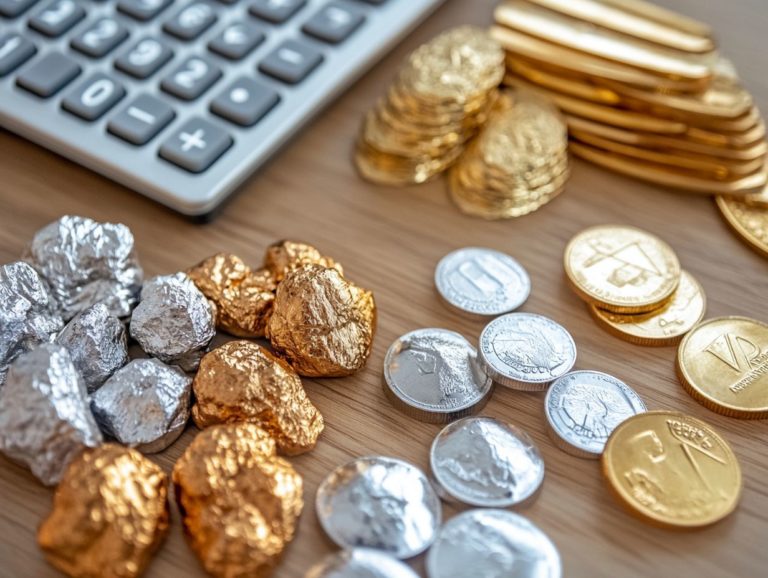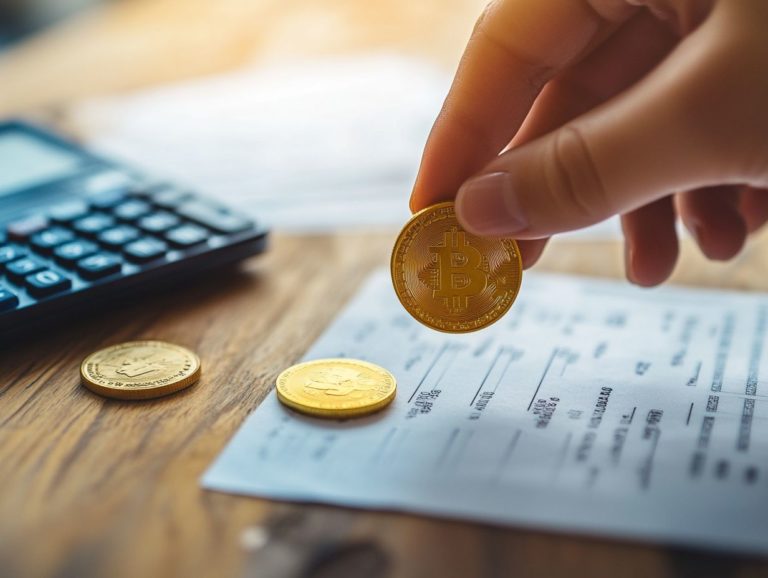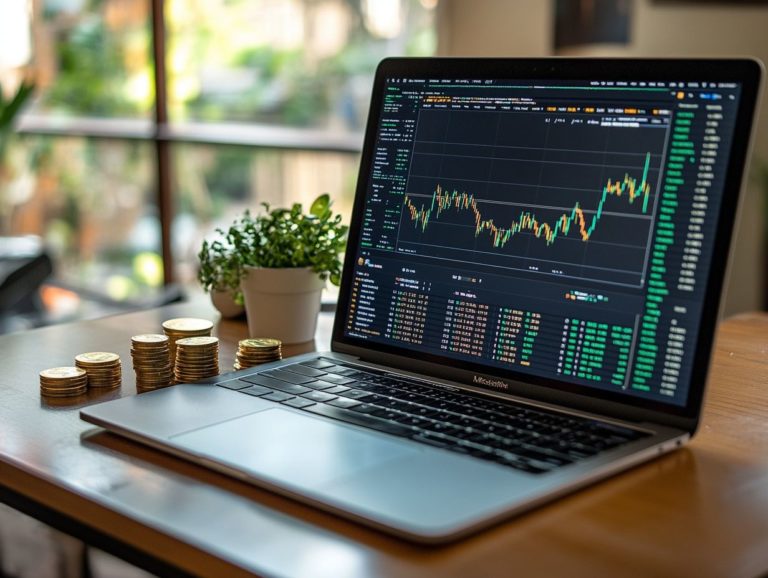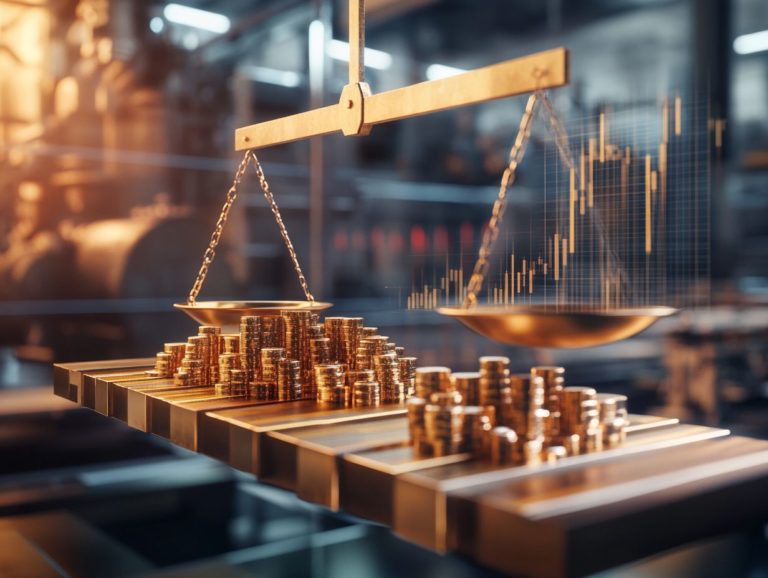What is the Role of Central Banks in Precious Metals?
Central banks play an important role in shaping the dynamics of precious metals like gold, silver, platinum, and palladium.
This article examines the definition and historical significance of central banks, highlighting their influence on monetary policy through gold reserves and the broader implications for other precious metals.
You ll also explore the ongoing debate surrounding gold manipulation and consider what the future may hold for central banks in this complex arena.
Join in as you unpack these fascinating intersections of finance and metals.
Contents
- Key Takeaways:
- Overview of Central Banks and Precious Metals
- Central Banks’ Role in Gold
- Central Banks’ Role in Other Precious Metals
- The Debate on Central Banks and Gold Manipulation
- Arguments for and Against
- Future Outlook for Central Banks and Precious Metals
- Possible Changes and Implications
- Frequently Asked Questions
- What is the Role of Central Banks in Precious Metals?
- How do Central Banks affect the price of Precious Metals?
- Do Central Banks hold physical Precious Metals?
- What is the main reason for Central Banks to hold Precious Metals?
- Can Central Banks manipulate the price of Precious Metals?
- How do Central Banks use Precious Metals in times of economic crisis?
Key Takeaways:
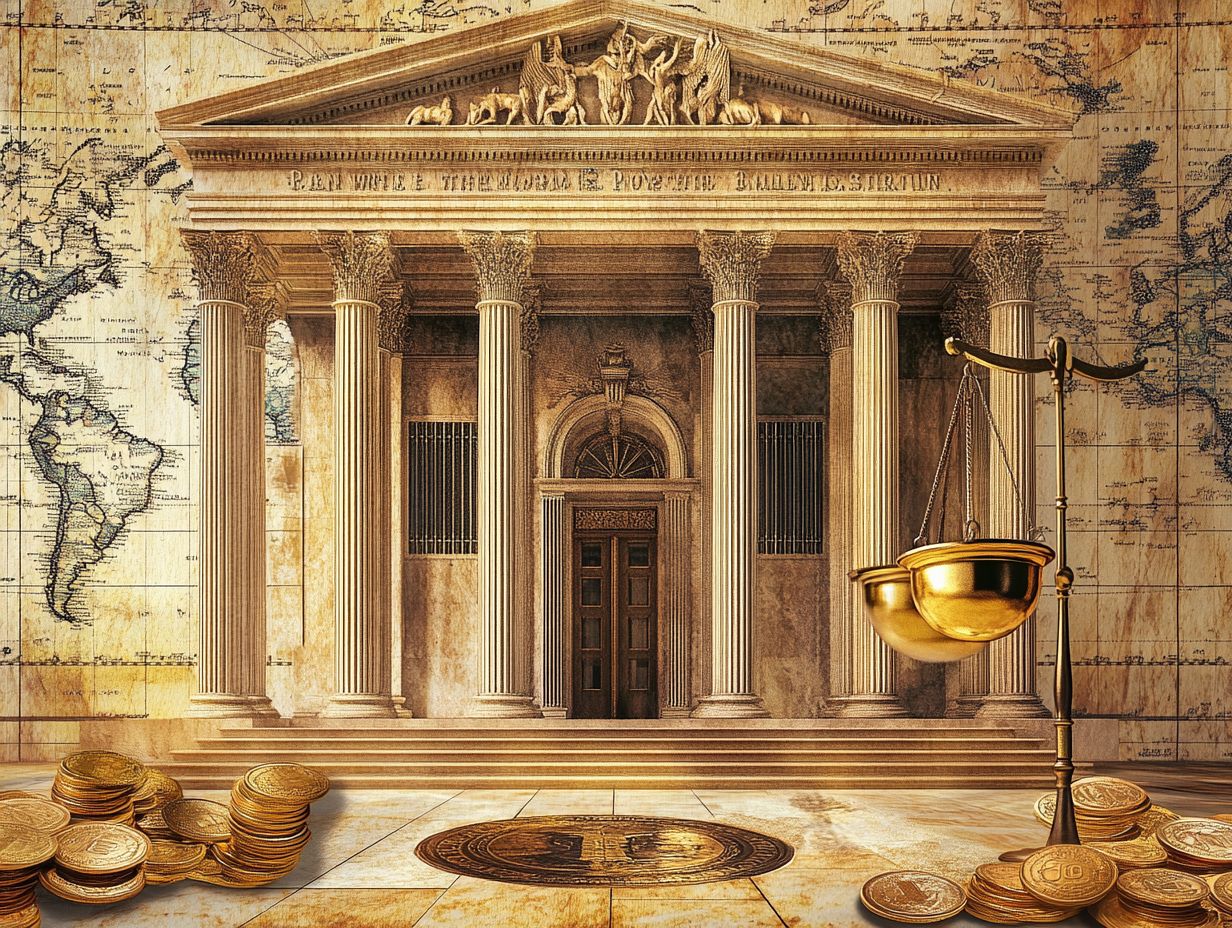
- Central banks manage monetary policy and possess large gold reserves, affecting the global economy.
- Their decisions impact gold prices, making them crucial players in the market.
- The ongoing debate about gold manipulation raises questions about their influence on the market.
Overview of Central Banks and Precious Metals
Central banks hold an important role in the global economy by managing monetary policy and ensuring economic stability through various mechanisms, including financial institution regulation and the accumulation of foreign reserves.
These institutions have been influential players in the precious metals market, particularly gold. Their purchasing strategies and reserve management practices significantly shape gold demand and prices.
Definition and Purpose of Central Banks
Central banks are national institutions that oversee the monetary system and implement monetary policy aimed at ensuring economic stability and managing inflation. These factors are vital for the health of financial institutions.
They set interest rates, regulate the money supply, and supervise banking systems. This influence fosters an environment conducive to sustainable economic growth.
By addressing inflationary pressures and ensuring liquidity during financial stress, central banks mitigate risks, creating ripples throughout the economy.
Their actions impact everything from consumer spending to the investment strategies of financial institutions, ultimately shaping the broader economic landscape. A stable monetary policy enhances investor confidence and lays a strong foundation for long-term prosperity.
History of Central Banks and Precious Metals
The history of central banks is intricately linked to precious metals, particularly gold, which has served as a foundational element for monetary systems over the centuries.
From the early days of the Byzantine Empire to the creation of the Bank of England in 1694, gold s inherent value made it the preferred asset for backing currencies. This relationship was strengthened during the Gold Standard era, when nations pegged their currencies to gold, enhancing international trade.
Significant events like the Great Depression and the subsequent abandonment of the Gold Standard prompted central banks to rethink their policies on gold reserves. Nowadays, these institutions hold gold not just as a hedge against inflation but also as a symbol of trust and historical significance amid the evolving monetary landscape.
Central Banks’ Role in Gold
Central banks occupy a crucial position in the gold market, managing their gold reserves and shaping monetary policy. This directly influences gold demand and the broader market outlook for this precious metal.
Understanding their role provides valuable insights into market dynamics and investment opportunities.
Stay informed about the evolving role of central banks subscribe for updates!
Gold Reserves and Money Management
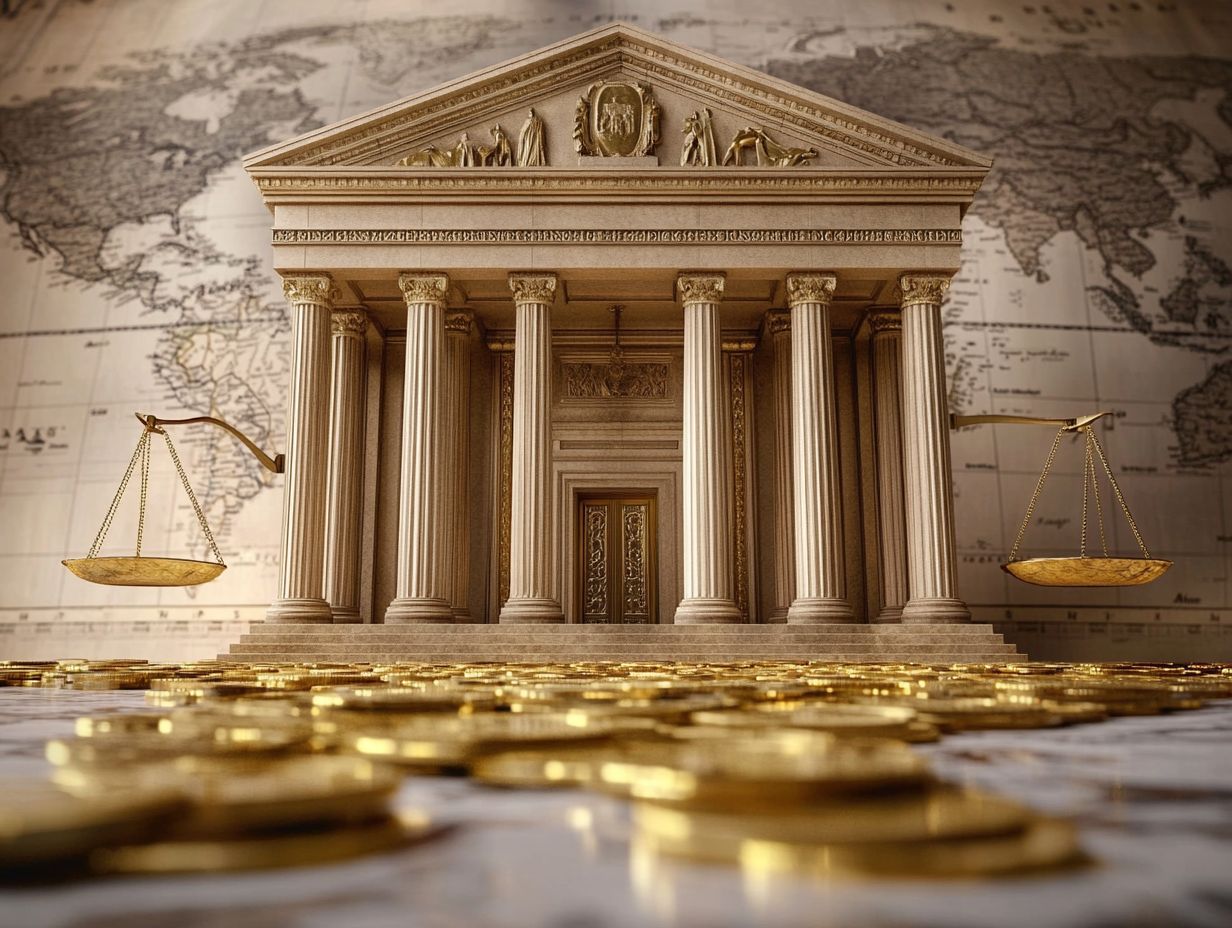
Gold reserves held by central banks play a pivotal role in managing money, acting as a safeguard against inflation while promoting economic stability.
By maintaining substantial gold reserves, central banks bolster their capacity to navigate financial crises and market turbulence. This precious metal serves as a hedge against inflation and acts as a protective asset during geopolitical uncertainties.
The strategic significance of these reserves lies in their ability to strengthen a nation’s currency, instilling confidence among investors and traders. When domestic currencies are under pressure, gold becomes a critical stabilizing asset that you can count on, helping to mitigate risks associated with economic fluctuations.
Gold reserves are crucial for any effective money management strategy!
Impact on Gold Prices
The actions of central banks profoundly impact gold prices, driven by their policies on gold purchases, reserve levels, and overall market dynamics.
These institutions strategically buy and sell gold to manage their reserves, significantly influencing the supply and demand equation. When a central bank adopts an expansionary money management approach, it can trigger heightened inflation expectations, leading investors to seek gold as a reliable hedge against rising prices.
The market reacts to various economic indicators like unemployment rates and GDP growth playing a crucial role in shaping your investment strategies. By keeping an eye on these factors, you can navigate the ever-changing landscape more effectively and make well-informed decisions about your gold portfolio.
Central Banks’ Role in Other Precious Metals
While gold may often steal the spotlight, it’s crucial to recognize that central banks also manage and value other precious metals such as silver, platinum, and palladium. Their influence extends beyond gold, contributing to economic stability and shaping the dynamics of the precious metals market.
Silver, Platinum, and Palladium
Silver, platinum, and palladium hold significant importance, much like gold. Their values are intricately tied to central bank policies and strategies for economic stability.
These metals are not just for investing; they also play vital roles in industries that affect their demand. To understand their importance further, consider the role of precious metals in a portfolio. When central banks adjust interest rates or implement a method used by central banks to increase money supply, market fluctuations arise that directly impact the prices of these metals.
In times of uncertainty regarding fiat currencies, investors often flock to silver, platinum, and palladium, viewing them as safe-haven assets. This shift leads to an increase in demand and value.
Furthermore, geopolitical tensions and the evolving automotive industry especially the rise of electric vehicles introduce further complexity to global perceptions and trading of these precious metals.
The Debate on Central Banks and Gold Manipulation
The subject of central banks and gold manipulation presents a nuanced landscape, with divided opinions on their influence over market dynamics and broader implications for economic stability.
Engaging with this topic invites a deeper exploration of the intricate interplay between money management and precious metals, revealing the complexities at play in today’s financial systems.
Arguments for and Against

Arguments surrounding central banks and gold manipulation often revolve around differing market perspectives. Proponents of the idea contend that such manipulation undermines economic stability, while critics assert it serves as a necessary tool for managing financial institutions.
This ongoing debate holds the attention of investors, policymakers, and economists alike, raising vital questions about the integrity of financial markets and the broader economy. Advocates argue that when central banks influence gold prices, they create an artificial market environment that distorts true value and diminishes trust among investors.
Conversely, those who oppose this notion believe that planned actions are essential not only for stabilizing currency but also for protecting against unforeseen financial crises.
These contrasting viewpoints profoundly shape public perception, influencing consumer confidence and investment strategies. Ultimately, they play a crucial role in determining the overall economic landscape.
Future Outlook for Central Banks and Precious Metals
Looking ahead, we see important changes brewing. The role of central banks in managing precious metals will soon evolve, shaped by market trends, economic conditions, and geopolitical factors that influence economic stability.
Possible Changes and Implications
Possible changes in central banks’ policies regarding precious metals could significantly impact your economic landscape and investment strategies across various markets.
As central banks reassess their reserve compositions (the mix of assets held by central banks), the incorporation of more precious metals like gold and silver may well rise to the forefront, marking a pivotal shift towards safeguarding economic stability.
Such adjustments might be a direct response to rising prices and worldwide issues, prompting you to rethink how you approach your portfolio. This shift could uncover new investment opportunities in the precious metals market, encouraging you to reevaluate your risk management strategies.
The transformation in central bank policies has the potential to reshape market dynamics, influence commodity prices, and dictate future trends in wealth preservation. Now is the time to rethink your investment strategies.
Frequently Asked Questions
Here are some common questions about central banks and precious metals:
What is the Role of Central Banks in Precious Metals?
Central banks play a crucial role in the precious metals market as they are responsible for managing a country’s reserves of gold and other precious metals.
How do Central Banks affect the price of Precious Metals?
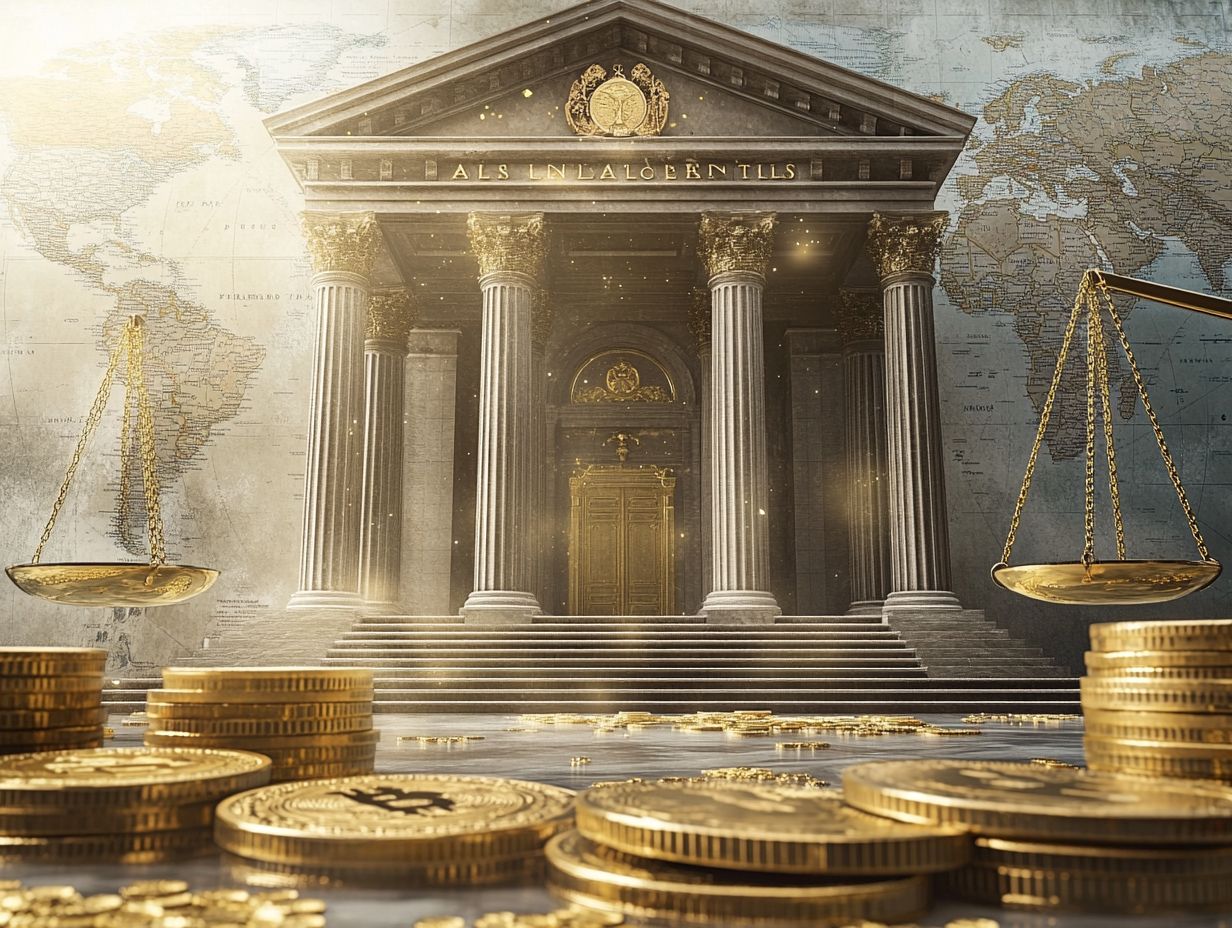
Central banks can influence the price of precious metals through their buying and selling activities in the market, as well as by setting interest rates and adjusting monetary policies.
Do Central Banks hold physical Precious Metals?
Yes, central banks hold physical precious metals in their reserves as a means of diversifying their assets and protecting against inflation and economic uncertainties.
What is the main reason for Central Banks to hold Precious Metals?
The main reason for central banks to hold precious metals is to maintain confidence and stability in their country’s currency and economy. Gold, in particular, is seen as a safe-haven asset in times of crisis.
Can Central Banks manipulate the price of Precious Metals?
Central banks have the ability to influence the price of precious metals, but they cannot manipulate it outright. Their actions and policies can impact the market, but other factors such as supply and demand also play a significant role.
How do Central Banks use Precious Metals in times of economic crisis?
During economic crises, central banks may use their reserves of precious metals to stabilize their currency and provide liquidity to the market. This can help mitigate the effects of the crisis and restore confidence in the economy.











